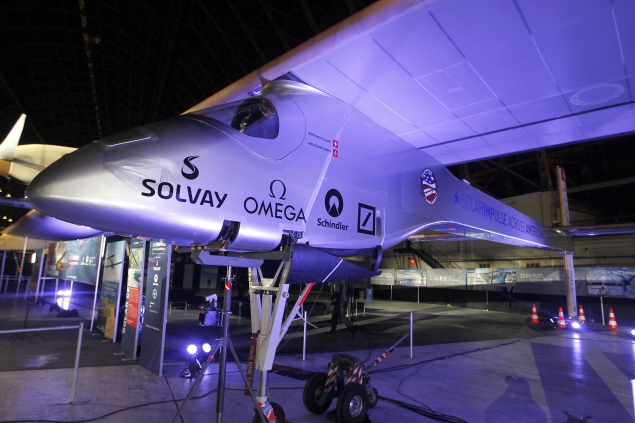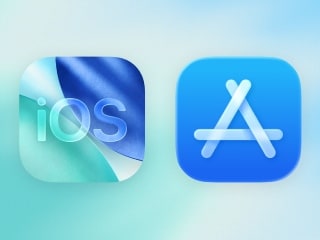- Home
- Others
- Others News
- Solar powered plane plans flight across US
Solar-powered plane plans flight across US

Solar Impulse, considered the world's most advanced solar-powered plane, is expected to be ready to leave from NASA Ames Research Center in California on May 1, although the actual departure will depend on the weather.
Solar Impulse plans to reach New York's Kennedy Airport in early July - without using a drop of fuel, its creators said.
"We want to inspire the young generation to become pioneers, to help them find and develop their passion," said André Borschberg, Solar Impulse's co-founder, pilot and CEO. .
The Solar Impulse is powered by about 12,000 photovoltaic cells that cover massive wings and charge its batteries, allowing it to fly day and night without jet fuel. It has the wing span of a commercial airplane but the weight of the average family car, making it vulnerable to bad weather.
Its creators say the Solar Impulse is designed to showcase the potential of solar power and will never replace fuel-powered commercial flights. The delicate, single-seat plane cruises around 40 miles per hour (64 kph) and can't fly through clouds.
"The more you fly the more energy you have stored in the batteries, so it's absolutely fabulous to imagine all the possibilities the people can have with these technologies in their daily lives," said Bertrand Piccard, Solar Impulse co-founder and chairman.
In 2010, the solar plane flew non-stop for 26 hours to demonstrate that the aircraft could soak up enough sunlight to keep it airborne through the night. A year later, it went on its first international flight to Belgium and France.
Last year, the Solar Impulse made its first transcontinental voyage, traveling 1,550 miles (2,495 kilometers) from Madrid to the Moroccan capital, Rabat, in 20 hours.
Piccard and Borschberg are planning an around-the-world flight in an improved version of the plane in 2015.
Piccard comes from a line of adventurers. His late father, Jacques, was an oceanographer and engineer who plunged deeper into the ocean than any other person. His grandfather Auguste, also an engineer, was the first man to take a balloon into the stratosphere.
Bertrand Piccard and Brian Jones made history in 1999 when they became the first people to circle the globe in a hot air balloon, flying 25,000 miles (40,230 kilometers) nonstop for 20 days.
Get your daily dose of tech news, reviews, and insights, in under 80 characters on Gadgets 360 Turbo. Connect with fellow tech lovers on our Forum. Follow us on X, Facebook, WhatsApp, Threads and Google News for instant updates. Catch all the action on our YouTube channel.
Related Stories
- Samsung Galaxy Unpacked 2025
- ChatGPT
- Redmi Note 14 Pro+
- iPhone 16
- Apple Vision Pro
- Oneplus 12
- OnePlus Nord CE 3 Lite 5G
- iPhone 13
- Xiaomi 14 Pro
- Oppo Find N3
- Tecno Spark Go (2023)
- Realme V30
- Best Phones Under 25000
- Samsung Galaxy S24 Series
- Cryptocurrency
- iQoo 12
- Samsung Galaxy S24 Ultra
- Giottus
- Samsung Galaxy Z Flip 5
- Apple 'Scary Fast'
- Housefull 5
- GoPro Hero 12 Black Review
- Invincible Season 2
- JioGlass
- HD Ready TV
- Laptop Under 50000
- Smartwatch Under 10000
- Latest Mobile Phones
- Compare Phones
- OnePlus 15R
- Realme Narzo 90x 5G
- Realme Narzo 90 5G
- Vivo S50 Pro Mini
- Vivo S50
- OPPO Reno 15c
- Redmi Note 15 5G
- Redmi Note 15 Pro 5G
- Asus ProArt P16
- MacBook Pro 14-inch (M5, 2025)
- Infinix Xpad Edge
- OnePlus Pad Go 2
- Just Corseca Skywatch Pro
- Honor Watch X5
- Acerpure Nitro Z Series 100-inch QLED TV
- Samsung 43 Inch LED Ultra HD (4K) Smart TV (UA43UE81AFULXL)
- Asus ROG Ally
- Nintendo Switch Lite
- Haier 1.6 Ton 5 Star Inverter Split AC (HSU19G-MZAID5BN-INV)
- Haier 1.6 Ton 5 Star Inverter Split AC (HSU19G-MZAIM5BN-INV)

















